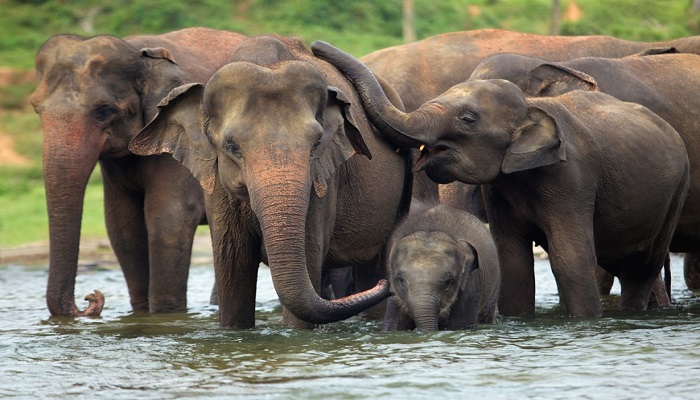
Elephant Conservation in India

More than half of Asia’s elephants are found in India, but the country’s elephant population has dipped in the past few years – by nearly 10 percent across 23 states between 2012 and 2017.
South Asian country opened a hospital dedicated to the conservation of elephants. The facility is jointly run by the conservation group Wildlife SOS and Uttar Pradesh’s forest department and is already treating nearly two dozen injured, sick and geriatric pachyderms, which were rescued and had been kept at a conservation and care center.
Spanning 12,000 square feet (1,100 square meters), the hospital is equipped with wireless digital X-Ray, laser treatment, thermal imaging, ultrasonography, hydrotherapy and tranquillization equipment.
Elephants have a strong cultural symbolism in India and human-elephant interaction has a rich history in the region. At the same time, elephants face substantial abuse in India.
Asian elephants are also endangered and enjoy the highest degree of protection for animals under India’s powerful Wildlife Protection Act.
“Unlike their African counterparts, Asian elephants are relatively understudied,” Arinita Sandilya, a senior executive at the Wildlife SOS.
“Coupling this with the fact that their population is dwindling in the wild due to reasons such as escalated human-elephant conflict, railway collision, habitat destruction and captivity, the need to understand this majestic species is even more pronounced,” she added. Asian elephants are smaller in size with smaller ears compared with their African cousins.
The medical center hopes it can contribute towards behavioral studies, veterinary science and pathology of Asian elephants – eventually helping to frame better conservation policies.
Declining elephant population
“The hospital will be open for practitioners to come and learn about veterinary practices and humane management of elephants, and apply this knowledge towards better management of their elephants,” said Sandilya.
India bestowed the status of “national heritage animal” on elephants in 2010 to increase protective measures for the conservation of the species as their numbers have declined in recent years.
Since 1992, when India launched “Project Elephant,” the government has undertaken census once in four or five years. Project Elephant has provided a focus for all the conservation efforts since then.
Besides cruel treatment at circuses and illegal captivity, elephants in the wild also face threats from poaching for their tusks and rapid loss of habitat. On average, 80 elephants die every year in India from human contact – whether it is by electrocution, poaching, poisoning and train accidents, according to environmental ministry figures.
Conservation of the species
India has 29 formally declared elephant reserve forests – covering an area of about 65,000 square kilometers (25,000 square miles), along with 88 dedicated elephant “corridors” opening the known travel paths of the animals. Travelling hundreds of kilometers, nomadic elephants require large areas of suitable habitat.
“Elephant conservation in India is a big issue and right now we need a hospital like this that caters
to elephants who are sick and in distress,” said Soumitra Dasgupta, inspector general of forests (wildlife) with the federal government’s environment ministry.
VK Venkitachalam, an elephant welfare activist who runs the Heritage Animal Task Force, about a previous proposal to set up a full-fledged elephant hospital in India’s southern state of Kerala that didn’t succeed.
“It didn’t succeed because of political infighting within the state,” he said, adding that establishing
such a hospital is certainly a significant step forward for elephant conservation.
Venkitachalam added that Kerala has ample infrastructure facilities to set up something similar to the elephant hospital in Uttar Pradesh.
“Kerala’s forest department has enough funds and space in veterinary universities to handle such projects,” added Venkitachalam. As many as 31 captive elephants have died this year alone in the southern state.
“Much of the diagnostic equipment is now transportable and it will be beneficial for elephant camps,” said Venkitachalam.
Sandilya from Wildlife SOS said the hospital in Mathura would help elephant conservation across India and beyond.
“The elephant hospital would be open to practitioners and students from the world over. We aim to develop more interest among conservationists about the plight of Asian elephants and push for concerted action.”
“The hospital would remain open to treating elephants from Kerala as and when approached by the Kerala Forest Department,” she added. Please credit and share this article with others using this link:
Source: sindonews / elephantsindia.




































